6 Tips for Starting a Dairy and Gluten Free Diet
Learn how to improve your health, reduce inflammation, and fight chronic disease with these tips for starting a gluten-free and dairy-free diet. This article reviews the basics and a plan for eliminating both gluten and dairy.
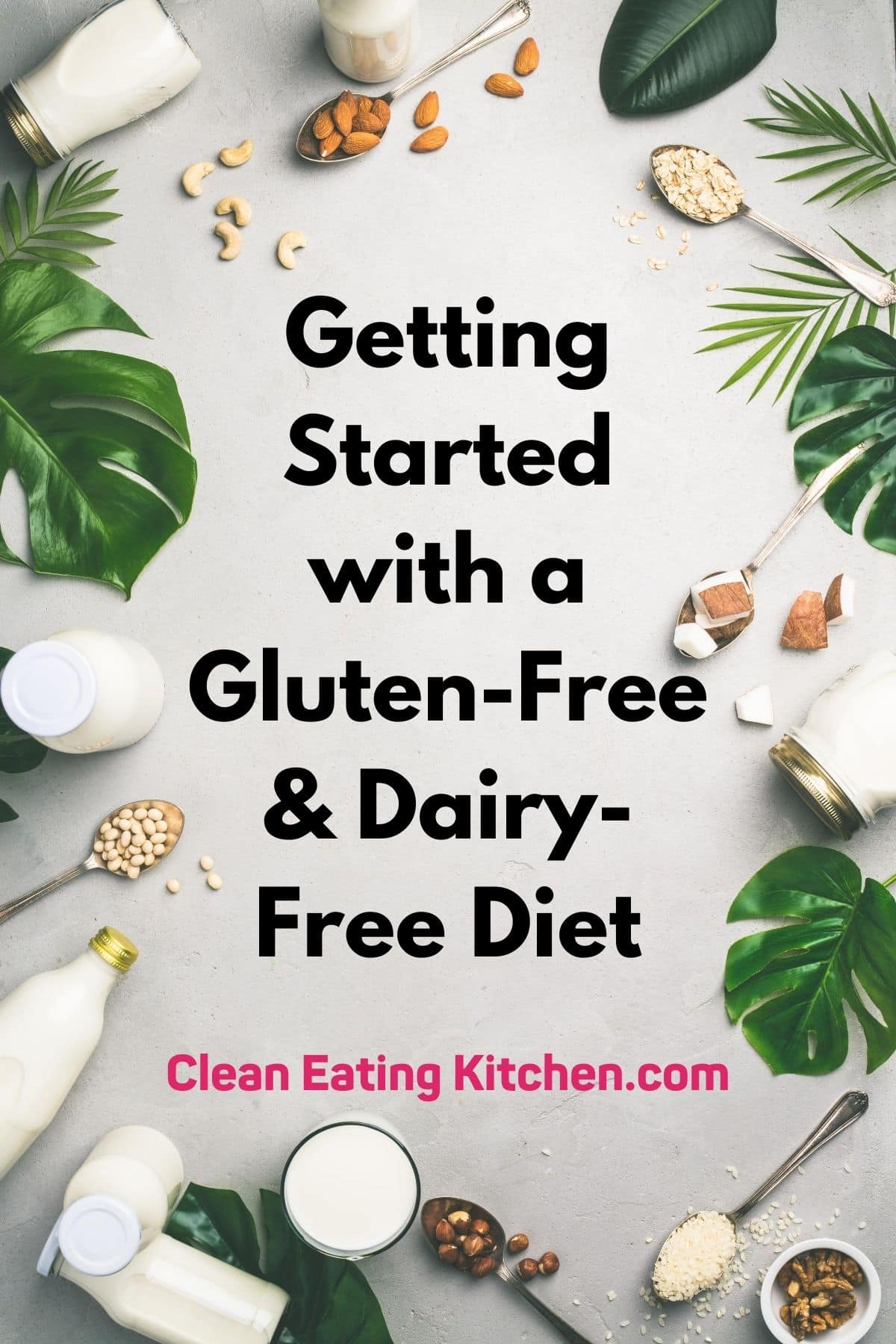
Many people go gluten-free and dairy-free to help manage chronic disease, food allergies, food sensitivities, and inflammation.
Both gluten and dairy are also common allergens and and can cause issues in many people. Depending on your symptoms, your healthcare provider may recommend trying a gluten-free and dairy-free diet to see if it helps.
But, what are the best ways to get started on a gluten-free and dairy-free diet?
Whether you are new to this type of eating or you’ve been doing it awhile, I hope this helps you on your journey to feeling better.
What is Gluten?
First off, let’s review what gluten is and how it can be a problem for some people.
Gluten is a type of protein known as a prolamin found in the endosperm of grains such as wheat, barley, and rye. Gluten is the “glue” that holds baked-goods together and is best known for its stretchy quality.
Foods containing gluten include whole grains, most refined grains, breads, crackers, cookies, and many other foods. For instance, soy sauce contains gluten.
To effectively avoid gluten, you will need to read any food labels or ingredient labels of foods you buy.
What is Dairy?
Dairy refers to the milk produced by mammals, such as cow’s milk, goat’s milk, sheep’s milk, and even camel’s milk.
The most allergenic and most common and frequently consumed type of milk in the United States and Canada is cow’s milk.
Dairy can be found in a vast array of products, including milk, cream, yogurt, kefir, cheese, sour cream, cream cheese, and butter.
Eggs are not dairy foods, although they are often found in the dairy section of the grocery store.
Note: while ghee is often used as a substitute for butter, but it can still be inflammatory for people who have a strong sensitivity or allergy to dairy products.
Eating on a Restricted Diet
It can feel scary or restrictive when you decide to go gluten-free and dairy-free. I know, I’ve been there!
But, I can assure you that there is still an abundance of food you can eat. You can easily avoid gluten and dairy by sticking to a whole foods diet.
Stick to eating real foods and consume as little processed food as possible. If you do choose processed products, be sure to double check ingredient labels to make sure there is not gluten or dairy.
Tip: avoid items with ingredients such as “flavoring” or “natural flavors”, which may be hiding dairy or gluten. Here are other unexpected labels for gluten.
Getting Started on a Gluten-Free Dairy-Free Diet
Here are some additional tips for starting a gluten and dairy-free diet plan.
1. Clean our your kitchen and pantry
Once you make the decision to avoid gluten and dairy, it’s important to go through your kitchen and pantry to rid them of these foods. You can either donate foods with gluten or dairy or simply put them in a contained area that you avoid.
If there are other people in your household who don’t need to eat this way, let them know that these foods need to stay in the contained area so they don’t get mixed with the gluten-free and dairy-free options.
2. Re-stock your kitchen
Once you’ve made up your mind to get rid of gluten and dairy, you need to make sure you don’t feel deprived. The best way to do this is to go shopping and stock your kitchen with a variety of whole foods that are free from gluten and dairy.
See my clean eating shopping list and pantry guide which is 100% gluten-free and dairy-free.
If you choose to purchase processed foods, be very mindful of ingredient labels and contamination warnings. Often, even if a product is gluten or dairy free, it may have been processed on the same equipment as gluten or dairy containing products.
3. Don’t be afraid to tell people your dietary needs
When eating out at restaurants, inform your waiter that you cannot consume dairy or gluten.
Restaurants may cook certain foods in butter, or prepare foods on a surface covered in flour or even put flour into foods such as omelets, to make them more presentable. You cannot always trust seemingly gluten or dairy-free dishes, so make sure to ask.
To avoid contamination, communicate with your server and impress the importance of your restriction upon them. Remain firm–you can even ask them their specific processes for avoiding contamination. Many restaurants will even have gluten-free and dairy-free options!
Better yet, if you know you are going out to eat, do your research ahead of time.
Search online for “gluten-free dairy-free restaurants” in your area and review the menus online so you know what you can order ahead of time. It’s always a good idea to be informed before you order.
The same goes if you are attending a party or family gathering. Make sure your host knows about your needs and offer to bring a dish that you know you can enjoy.
4. Find suitable alternatives
Make sure you know your alternatives for gluten and dairy so you don’t feel deprived or hungry.
It’s relatively easy now to find conforming recipes and substitutes for gluten and dairy. Here are some common swaps to get you started.
Gluten-free replacements for wheat flour:
- Almond flour
- Rice flour
- Coconut flour
- Oat flour (be sure they are certified gluten-free oats)
- Cassava flour
- Sweet potato flour
- Gluten-free all-purpose flour
- Quinoa flour
- Buckwheat flour (see my related article on the substitutes for buckwheat)
Replacements for dairy products:
- Nut and seed milks (Almond milk/cashew milk/hemp milk)
- Oat milk (using gluten-free oats)
- Coconut milk
- Soy milk
- Plant-based cheeses
5. Keep a symptom journal
In order to confirm that a gluten-free and dairy-free elimination diet is working for you, it’s important to monitor your symptoms.
Keep a food and symptom journal so you can start to notice whether or not you are feeling better on a gluten-free and dairy-free diet.
It might take up to several weeks for you to see a difference. Be sure to take note of symptoms such as pain levels, sleep quality, skin issues, joint pain, weight management, and overall energy.
If you don’t see improvements in a few weeks, then you may need to cut out different foods or try a different type of elimination diet.
6. Get support
When taking on an elimination diet such as gluten-free and dairy-free, it’s best to work with a qualified healthcare provider to help make sure you don’t develop any nutrient deficiencies. See my article on how to find a functional medicine practitioner.
You may also want to join a Facebook group or find a buddy to get support from on your journey. Making dietary changes is hard and studies show that people who get support often do better.
If you don’t get the results you want after 6 weeks or so, you may need to re-consider which type of diet is best for you and if you are getting a benefit from avoiding gluten and dairy.
FAQs
Snacks don’t have to be processed, pre-packaged foods! Whole foods make quick, delicious, and cost effective snacks. Rather than reaching for snack packs or packaged foods, consider choosing basic foods like fresh fruits, veggies, nut butters, and meal leftovers.
If you do choose pre-packaged processed foods for a snack, be mindful of labels. You’ll begin to notice certain brands that are known for being gluten and dairy-free. Snacks labeled “vegan” or “paleo” are often safest, but be sure to always double check and weigh the risks of contamination for yourself.
Get my full list of the best gluten-free and dairy-free snacks.
Depending on your health condition and symptoms, you may not have to be gluten-free and dairy-free forever.
Sometimes a 6-week elimination diet can help pinpoint exactly which foods are a problem for you. Be sure to work with a qualified healthcare practitioner to help determine how long you need to be gluten-free and dairy-free.
Don’t Miss These Helpful Diet Resources
Conclusions
As you learn more about going gluten-free and dairy-free, you can generally rely upon labels and store sections marked gluten and dairy-free. Be aware that there is a risk of contamination with all processed foods or bulk items.
I hope you found this article helpful. It is meant to be a helpful guide to getting started with a gluten-free and dairy-free diet. For specific recipes, please do check out the clean eating recipe index which is 100% gluten-free and dairy-free using real food ingredients.
Don’t forget to join my newsletter list to get exclusive clean eating recipes and tips. The newsletter is 100% free with no spam; unsubscribe anytime.
About the Author: Carrie Forrest has a master’s degree in public health with a specialty in nutrition. She is a top wellness and food blogger with over 5 million annual visitors to her site. Carrie has an incredible story of recovery from chronic illness and is passionate about helping other women transform their health. Send Carrie a message through her contact form.
Note: this post is for informational purposes only and is not intended as medical advice. Please consult your healthcare provider for recommendations related to your individual situation.


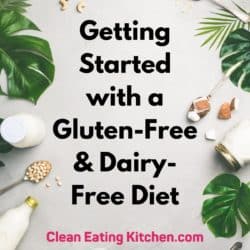
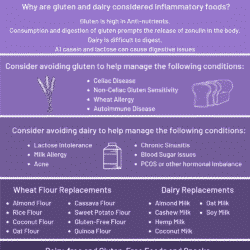
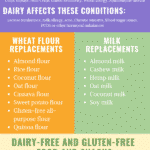

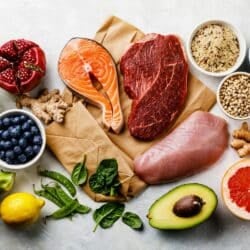
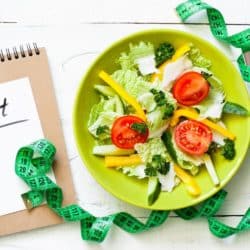
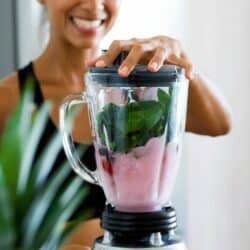


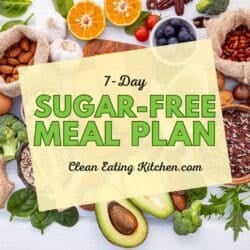
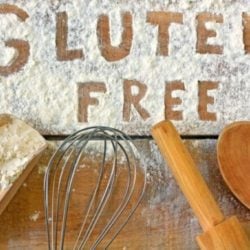

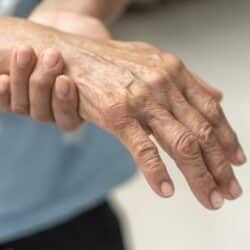


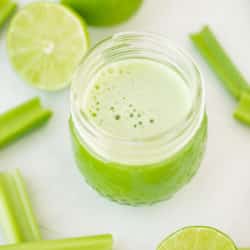
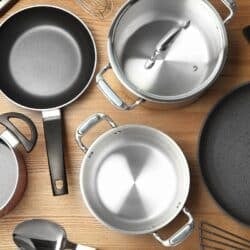



Hello do u have recipes that are dairy,gluten,egg, coconut,peanut n pea protein free? As a healthcare worker n athlete I find it very hard to eat properly when can only eat on a bus going from client to client n trying to eat btwn 1500 -1850 daty.
Yes almost all of my recipes meet your needs. Check my recipe index! 🙂
Thank you for sharing great tips!
Interesting info on the casein. Really weird though, I’ve been allergic to dairy since I was 16, and I do not react to casein. Exception to every rule I guess.
Made the mistake of testing for gluten allergy / intolerance several years ago, when I tried adding it back, reacted severely. So that had to go.
Now I’m having to give up eggs. Unless I can get them straight from a free range chickens bum, I react badly.
Not to mention garlic or several fruits & veggies I react to. It can be so hard to find something to eat. So many times ingredients can look totally safe (even if it’s “whole” food), and I still end up sick for days. Sometimes I just hold out on eating as long as possible cause I’m so tired of reacting to everything for no reason. Hmmm, sorry for all that! lol
Interesting, thanks Kat! I understand the frustration with having to manage a lot of food allergies/sensitivities. I am in the same boat! Stay strong and I hope you feel better. Take care!